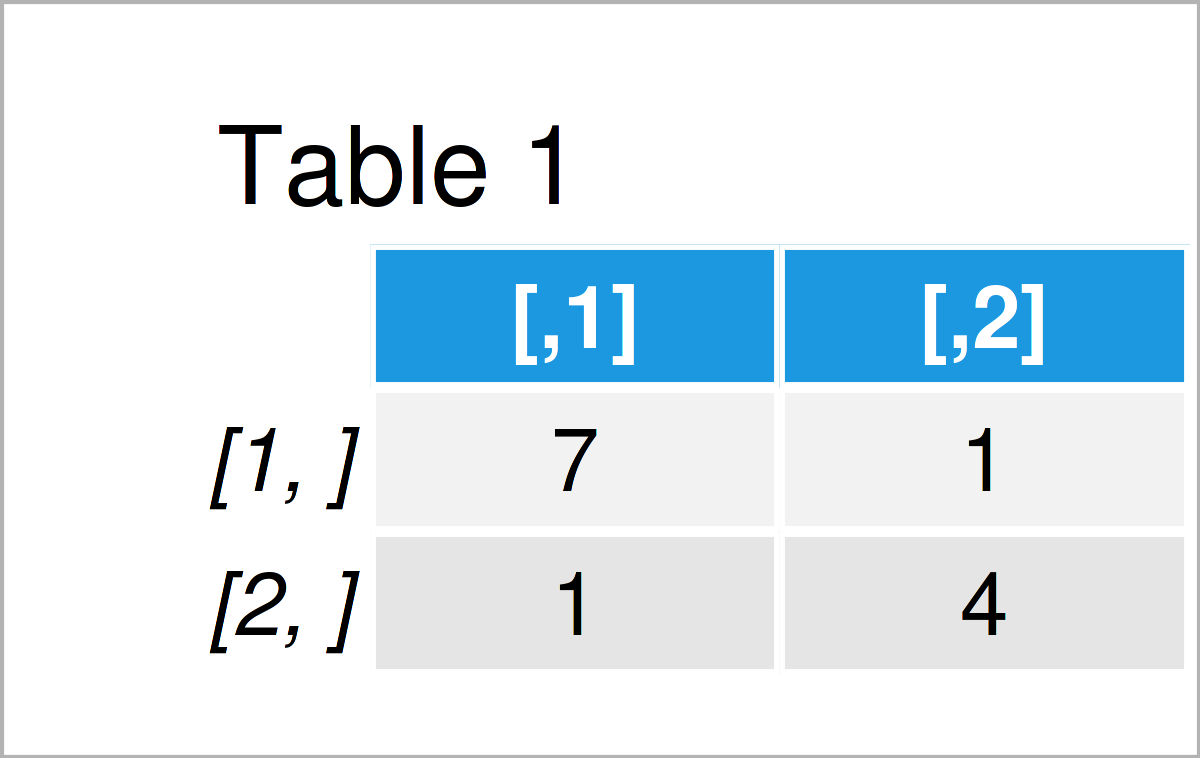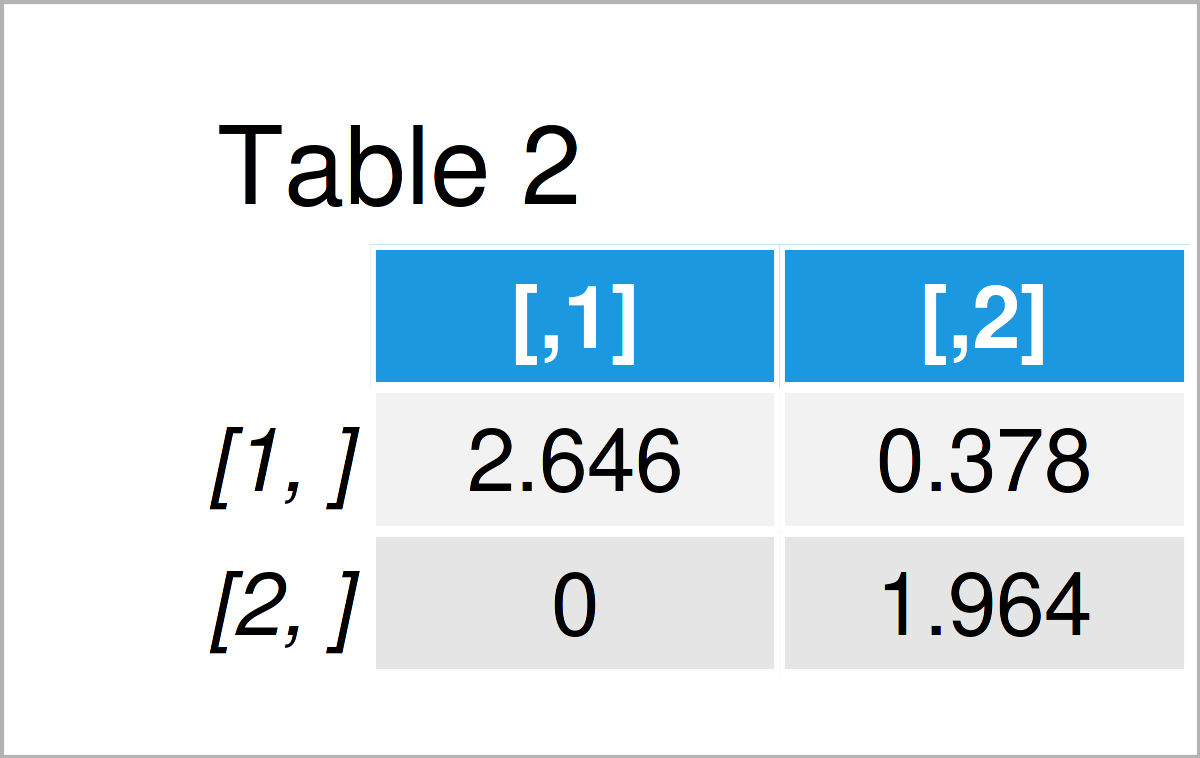Choleski Decomposition in R (Example) | Factorization with chol() Function
In this R tutorial you’ll learn how to conduct a Choleski decomposition (or factorization) using the chol function.
Table of contents:
You’re here for the answer, so let’s get straight to the example.
Constructing Example Data
First, we need to create some data that we can use in the following examples:
my_mat <- matrix(c(7, 1, 1, 4), nrow = 2) # Create example matrix my_mat # Print example matrix

Have a look at the previous table. It shows that our example data matrix has two rows and two numerical variables.
Example: Perform Choleski Decomposition Using chol() Function
The following syntax illustrates how to apply the chol function to conduct a Choleski decomposition in R.
Consider the following R code:
my_mat_chol <- chol(my_mat) # Apply chol function my_mat_chol # Print output matrix

As shown in Table 2, we have created a new matrix object containing the Choleski factorization of our input matrix.
Video & Further Resources
In case you need further explanations on the R codes of the present page, I recommend watching the following video on my YouTube channel. In the video, I’m explaining the contents of this post:
The YouTube video will be added soon.
Furthermore, you may read the related articles on my website. I have published several articles already.
To summarize: You have learned in this article how to apply the chol function in R programming. Don’t hesitate to let me know in the comments, in case you have further questions.






